#learn japanese
Text
The Difference Between ということだ and というものだ
~ということだ has two different meanings. Let's take a look at each one and their sentences.
1st meaning: I hear that... / It is said that...
Nuance: You want to convey the information you have obtained from a source; either from the TV, news, or a person.
• ニュースによると、明日は雨が降るということだ。
It is said that it will rain tomorrow according to the news.
2nd meaning: It means that... / In other words,...
• 田中さんに「明日から来なくてもいいからね」と言われた。つまり、首ということだ。
I was told by Mr. Tanaka "You don't have to come in from tomorrow." In other words, I was fired.
• 最近、運動するとすぐ疲れて…年と取ったということですね。
Lately, I'm getting tired easily when I exercise. It means that I'm getting old.
---------------------------------------------------
Now, let's look at ~というものだ
Meaning: it is a general knowledge that... / it is common sense that...
Nuance: to describe something everybody knows as a general knowledge or a common sense fact.
• N5 を勉強している人が N2 に合格するのは無理というものだ。
It is impossible for someone who is studying N5 to pass N2.
• 責任をとるのがリーダーというものだ。
Taking responsibility is what a leader is all about.
#study japanese#japanese#jlpt#jlpt n1#jlpt n2#jlpt n3#jlpt n4#jlpt n5#language#learn japanese#nihongo#language lover#studyblr#study blog#study notes#tips#grammar#japanese grammar
19 notes
·
View notes
Text

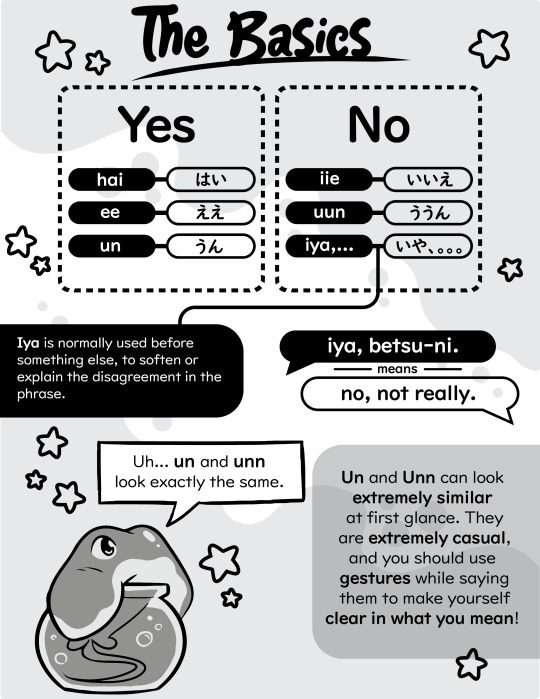
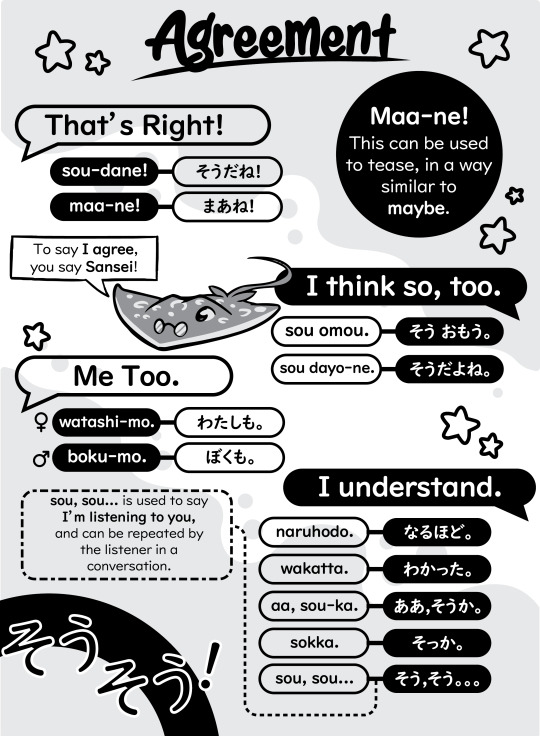


2K notes
·
View notes
Text
youtube
Can this game teach you Japanese?
So To Speak is a Japanese language learning puzzle games that uses contextual-based learning to build your vocabulary and grammar. It's releasing later this year and I played through the 30 minute demo to see if I could learn some Japanese.
Really enjoyed my time with it, and look forward to the full release. Link to game is in the description if you want to check the demo out for yourself.
270 notes
·
View notes
Text
いろどり · irodori - Japanese for life in Japan
(。•̀ᴗ-)✧ resources

IRODORI is a useful website made by The Japan Foundation. It is a series of 3 textbooks, with audios and materials completely free, focusing on developing skills useful for life in Japan.
Whether you are planning to come to Japan in the future and want to learn what you should be able to do before you arrive, or whether you are already living in Japan and wish to check your Japanese ability and increase the number of things you can do, we sincerely hope that this textbook will help you achieve your goals. - "what is irodori" website page.
The textbooks are super organized, divided in: starter (A1), elementary 1 and elementary 2. Finishing elementary 2 means having an A2 level [At A2 level, you can hold short, basic everyday conversations on familiar topics.]
I recommend styling your learning method with the goal you have in mind. You can understand more about it reading the post I made.
Hope it was helpful! Let me know and let's share resources~
またね~@inkichan
꒰ა ˚₊ ✧・┈・╴﹕꒰ ᐢ。- ༝ -。ᐢ ꒱﹕╴・┈・𐑺 ‧₊˚໒꒱
#japanese#nihongo#studyblr#japanese langblr#langblog#japanese studyblr#日本語#resources#japanese resources#free resources#japanese free resources#textbook#free#free textbooks#pdf#japanese pdf#learn japanese#learning japanese
563 notes
·
View notes
Text
Today I learned about the following Japanese words
晴れ女 (はれおんな), a woman who causes the weather to become sunny when she goes out
晴れ男 (はれおとこ), a man who causes the weather to become sunny when he goes out
雨女 (あめおんな), a woman whose presence causes rain
雨男 (あめおとこ), a man whose presence causes rain
I decided to create a fifth one:
天気の友 (てんきのとも), your nonbinary friend who is always prepared for whatever weather they might face. Rain coat, mittens, zip-off pants, you name it. They're prepared.
For illustrative purposes:

#meme#japanese language#pokemon#pokemon meme#politoed#ninetales#castform#torkoal#pelipper#learn japanese#language learning#japanese vocabulary#ポケモン
380 notes
·
View notes
Text
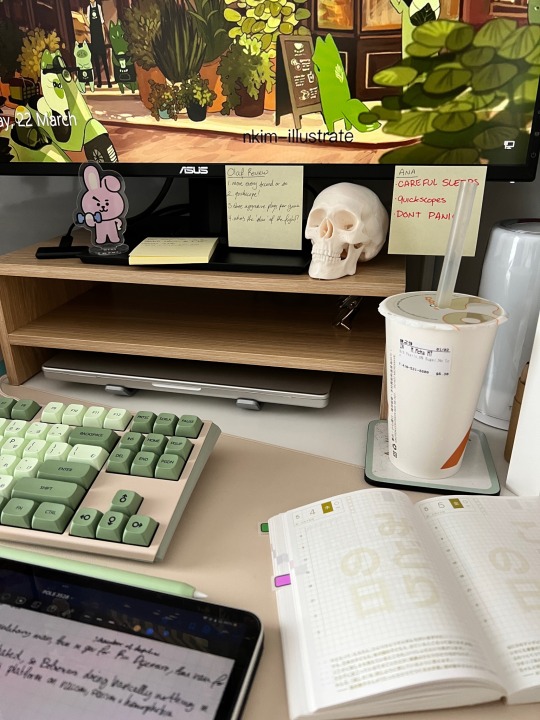
2023/03/24
i always told people my favourite colour was black, but i’m starting to realize that it’s probably matcha-green...
#lupusmaxima#matcha#green#green tea#coco#bubble tea#student#uni#studyblr#bookblr#modern academia#dark academia#light academia#aesthetic#study aesthetic#desk#stationery#japanese stationery#hobonichi#learn japanese#bujo#bullet journal#planner
859 notes
·
View notes
Text
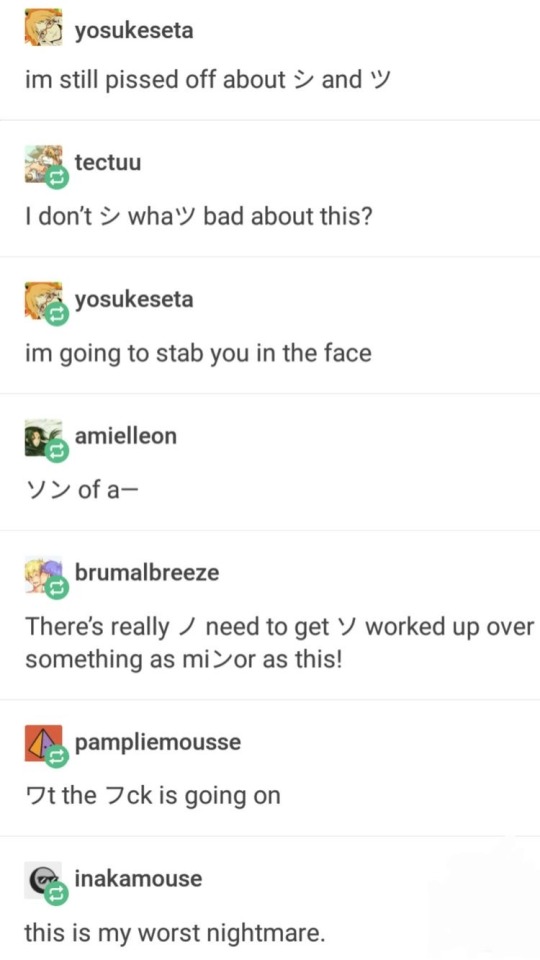
this exchange will never not be funny to me
3K notes
·
View notes
Text
Credit to @japanese_with_josh
I found this really helpful to hear a real life situation- not just from a textbook!
#japanese#language learning#studyblr#日本語#japan#langblr#japanese grammar#study japanese#nihongo#study#learn japanese#langblog#study kanji#travel#jlptn5#kanji#languages#language study#study abroad
662 notes
·
View notes
Text
This might be a very niche take but I think we should take people's reasons for learning a language in mind when suggesting how they go about it
I've seen people in a lot of Japanese learning communities tell other to never watch fantasy anime (or anime at all sometimes) or read anything that's not slice-of-life or actual literature because "people in real life don't speak like that"
And while, yes, that's true, native Japanese speakers do not generally speak like anime characters, uhhhh... The probability of me watching a fantasy anime in the course of a month is significantly higher than the probability of me going to Japan in the next five years. So understanding anime character speech is in fact more relevant to me than, idk, business lingo
And, I don't think that's a bad thing personally? Learning a language because you want to better understand content you find fun is just as good a reason as learning it to live in the country where the language is spoken, and it's fine and reasonable to adjust your learning strategies according to your personal goals
#japanese language#japanese langblr#langblr#language learning#language#langblog#learning#learn japanese#studying#adhd study#study blog#studyblr#discourse#hot take#日本語#日本語勉強
1K notes
·
View notes
Text
The 6 Differences Between は and が
DIFFERENCE 1
The important fact is AFTER は
• この犬は私のベットです。This dog is my pet.
You want to emphasize that this is not a stray dog. It is not someone else's pet dog. It is MY PET. So anything comes after は is the main part you want the listener to pay attention to.
The important fact is BEFORE が
• この犬が私のベットです。This dog is my pet.
You want to emphasize that THIS IS THE DOG that is my pet. Not other dogs. Imagine you're at a park and there are 3, 4 other dogs playing together with your dog and you want to tell your friend that THIS DOG is the one that is your pet dog, other dogs are not yours. So, what comes before が is the main part you want to tell the listener.
More examples:
• このケーキはおいしいです。This cake is DELICIOUS! (You want to tell your friend that this cake is indeed very good. Your emphasis falls on おいしい, so you use は, because the important fact is AFTER は.
• このケーキがおいしいです。THIS CAKE is delicious. (You want to tell your friend that among all the cakes on the buffet table, this particular cake you are pointing to is the most delicious one. Others are not good.) Your emphasis falls on このケーキ (THIS CAKE), so you use が, because the important fact is BEFORE が.
DIFFERENCE 2
New information and things that you mention for the first time, use が. Old information or topics that have been mentioned earlier but is now repeated again, use は.
• 学校にマイクという男がいます。There is boy named Mike in my school.
You started the conversation with your friend by saying there's a new student named Mike in the school. That is the first time you mentioned Mike. It is new information, therefore use が.
• マイクはアメリカ出身です。Mike is from America.
You mention Mike the 2nd time now and it is no longer a new information. It is considered old information, therefore use は.
DIFFERENCE 3
Stating facts without adding your personal opinion or judgment use が. By adding your own opinion or judgment, use は.
• 外に猫がいます。There is a cat outside.
You are just merely stating a fact that there is a cat outside. This sentence doesn't include your description about the cat. No personal opinion or judgment about the cat.
• あの猫は白いです。The cat is white in colour.
You are putting your description, your judgment into the sentence about the cat. When you are adding your own thoughts, opinion, description about something, use は.
• 日本の料理はおいしいです。Japanese food is tasty.
You are putting your opinion/judgment about Japanese food in your sentence, therefore, use は.
DIFFERENCE 4
When you make comparison, use は. When you eliminate other options, use が.
• お茶は好きですが、コーヒーは好きじゃありません。I like tea but I don't like coffee.
DIFFERENCE 5
If two actions are done by the same person, use は. If two actions are done by two different persons, use が first, then use は for the second action.
• 私はごはんを食べるとき、テレビを見ます。I have my meal and I am watching TV.
• 私がごはんを食べるとき、父はテレビを見ます。When I have my meal, my father watches TV.
DIFFERENCE 6
To modify a phrase into a noun, use が.
• これは彼女が作ってくれたケーキです。
What cake is this? This is the cake that is baked by my girlfriend. The phrase 「彼女が作ってくれた」 is to modify the cake, to describe about the cake.
Quiz Time
• 部屋は広いです。
• 部屋が広いです。
In English, both sentences mean "The room is spacious." But what is the difference?
In 部屋は広いです, it shows a comparison contrast nuance (read DIFFERENCE 4). If you say this, the listener will believe that you are making a comparison of this room with all the other rooms in the house. You want to say this room is spacious, whereas the other rooms are smaller in size.
In 部屋が広いです, you are merely stating a general fact about this room being spacious (read DIFFERENCE 3). You are not making any comparison. Your sentence has no added personal judgement or opinion. You are stating a fact about the room being spacious.
#japanese#nihongo#studyblr#study blog#study japanese#study motivation#learning#learn japanese#language#grammar#jlpt#jlpt n5#jlpt n4#jlpt n3#jlpt n2#jlpt n1
141 notes
·
View notes
Text
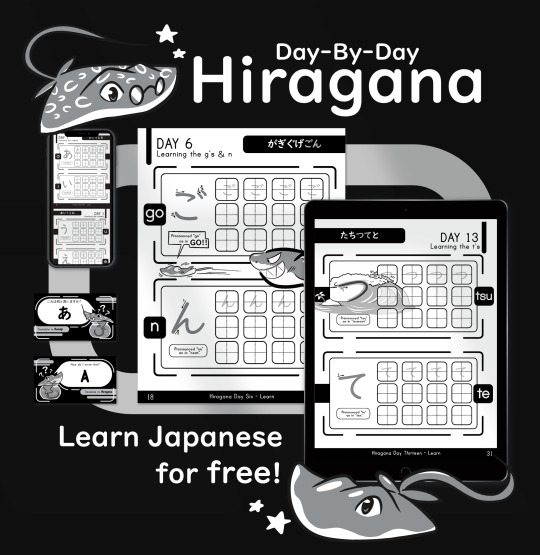
Download our free PDF now!
Day-By-Day Hiragana is made to teach you an important phonetic way of writing, so you can begin learning Japanese. You can also find out free games, flash cards, and handwriting guides to help you master the kana! Everything is 100% free, so download it now!
960 notes
·
View notes
Text


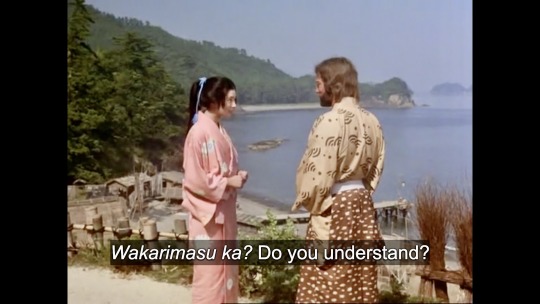
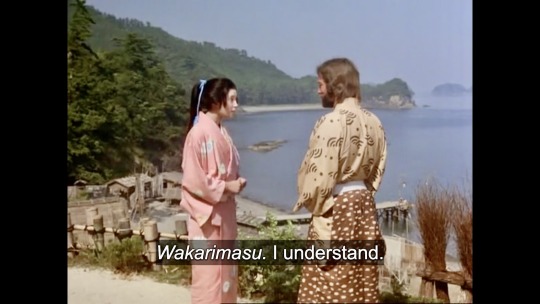
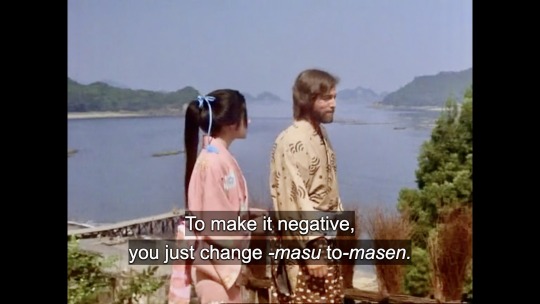
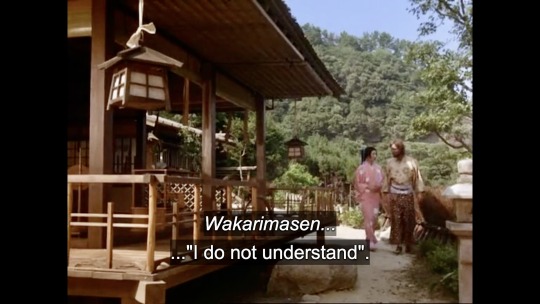




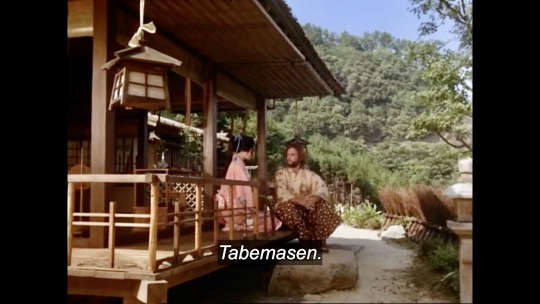
Shogun (1980)
Learning Japanese by the seaside with a pretty teacher. Sign me up. 😆
#shogun#shogun 1980#richard chamberlain#yoko shimada#japan#japanese language#learn japanese#japanese lesson
289 notes
·
View notes
Text
YouTube Channels for Kids by JLPT Levels
(。•̀ᴗ-)✧ resources

こんにちは, Japanese learners! Learning a language is an exciting adventure, isn't it? To add a spark of joy to your Japanese learning journey, here's a collection of YouTube channels tailored for kids. Organized by JLPT levels, these channels offer a blend of education and entertainment for learners at different stages. Keep in mind, though, that JLPT levels aren't an exact science like math – language learning can be subjective in terms of difficulty. However, these resources provide a fantastic starting point and a fun way to explore the world of Japanese language and culture. Let's hop into this delightful world of animated learning and playful discoveries!
Friendly reminder to adjust your way of learning in order to make the most of what you're studying to reach the goal you truly want! read my post about it (ᵔ◡ᵔ)
꒰ა ˚₊ ✧・┈・╴N 5 ╴・┈・𐑺 ‧₊˚໒꒱
— Curious George (N5 level)
— Japanese folk tales/anime series (Japanese audio/Japanese subtitles) from BomBom Academy (N5 level)
— Peppa Pig (N5-4 level)
— Anpanman (N5-4 level)
— NHK education (N5-4 level)
꒰ა ˚₊ ✧・┈・╴N4 ╴・┈・𐑺 ‧₊˚໒꒱
— Cinnamon Roll, Sanrio (N4 level)
— [Anime] Atashin'chi (N4-3 level)
꒰ა ˚₊ ✧・┈・╴N3 ╴・┈・𐑺 ‧₊˚໒꒱
— Sesame Street Japan (N3 level)
— Chibi Maruko Chan (N3-2 level)
꒰ა ˚₊ ✧・┈・╴N2 ╴・┈・𐑺 ‧₊˚໒꒱
— Precure (N2 level)
またね~@inkichan
꒰ა ˚₊ ✧・┈・╴﹕꒰ ᐢ。- ༝ -。ᐢ ꒱﹕╴・┈・𐑺 ‧₊˚໒꒱
#japanese#nihongo#studyblr#learn Japanese#learning Japanese#japanese langblr#langblog#japanese studyblr#日本語#study japanese#japanese resources#free resources#resources#japanese free resources#youtube#JLPT#JLPT N5
278 notes
·
View notes
Text
Learning a new language shouldn't be awkward.
It feels awkward because unnecessary stigma causes you to feel that way. "Broken" English, "Silly" Japanese, "Odd" Spanish, etc. are all derogatory terms that are hurtful to people when they just seek a deeper understanding. The best way to practice a new language is to get out there and introduce yourself. Have a chat at a coffee shop, gab on the train, have fun with your friends. Travel if possible and interact with the locals. We are all individuals, and every language is beautiful. Communication is beautiful.
#important#motivation#linguistics#infodump#information#learning#learn japanese#learn spanish#learn english#learn something new every day#please share#please reblog#this is so important to me#you are loved#you are not alone#you are worthy#notice
188 notes
·
View notes
Text
[Japanese→English] @panmaumau Tweet — Color Coded Translation

————————————————————————
何も知らない生き物の顔
なにもしらないいきもののかお
The face of a living thing that doesn’t know anything.
————————————————————————
Please correct me if I made a mistake
#color coded translation#japanese#japanese vocabulary#study japanese#japanese lesson#easy japanese#beginner Japanese#learning japanese#japanese lingblr#japanese linguistics#learn japanese#japanese langblr#japanese learning#japanese language#japanese vocab
73 notes
·
View notes
Text
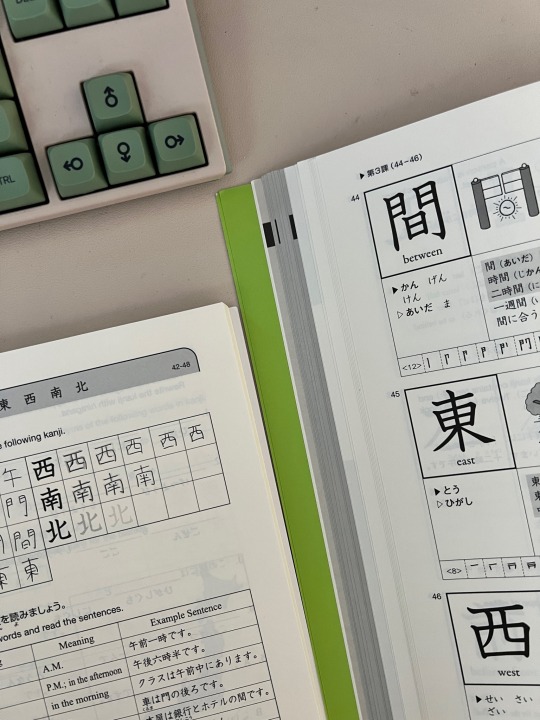

2023/12/22
yesterday i turned 21, which means i had to log onto all my socials and change my bio. it’s like a tradition at this point.
my pc is in shambles at the moment, so i’m back to doing some japanese ! ワンピースを読みます !
#lupusmaxima#dark academia#bookblr#chaotic academia#brown#coffee#beige#literature#studyblr#classical literature#japanese#learn japanese#langblr
153 notes
·
View notes